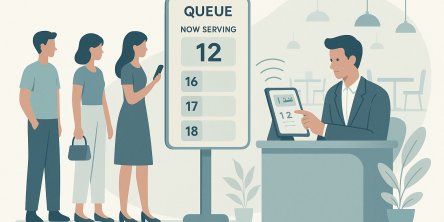Best Practices for Ensuring Azure Cloud Security

In an era where digital assets and data are the lifeblood of businesses, ensuring robust cloud security has never been more crucial. As a rapidly growing number of companies and other entities in the world embrace cloud computing, it has become vital to focus on the one factor that remains all-important, no matter the technology involved: security. Given that we are dealing with the digital realm, safety is, of course, important. Azure, Microsoft's cloud platform, has become an integral part of the infrastructure of countless organizations. However, as the adoption of Azure grows, so does the need for comprehensive security measures. To safeguard your organization's sensitive information, applications, and resources in the Azure cloud environment, it's essential to implement top-notch security best practices.
With this blog, I'll delve into the most critical Azure cloud security best practices that every organization should embrace. So whether you're a seasoned cloud architect or just starting your journey into Azure, understanding these principles will help fortify your digital fortress and protect your assets in the cloud.
What is Azure Cloud?
Think of Azure Cloud as a gigantic, super-powered computer based in a data center. For customers, it means that instead of having a server in their office, they can use the Azure Cloud to store files and do all sorts of computer stuff, including running software. However, instead of all that happening on their device, it is all happening on a Microsoft data center somewhere.
Suffice it to say that Azure Cloud is a tool that can help one create, deploy, and manage apps and services. However, none of these are viable without proper security practices. So, let us tell you about some of the most essential Azure best practices for ensuring security in the digital realm.
Azure Cloud Security: Top Best Practices
- Multi-factor authentication: This may seem a tad basic, but we cannot insist enough on how vital multi-factor authentication is for cloud security. It brings in an additional layer of protection by asking users to provide two or more forms of verification, such as a password and a one-time code sent to a mobile device, before they are granted access to the requisite resources on Azure Cloud. So make sure that MFA is enabled for employee/user accounts needing access to Azure resources.
- Data and database security: Because Azure is a Microsoft offering, it ought to come as no surprise that this baby comes loaded to the gills with security-focused features and provisions. However, it is still upon us to leverage such requirements to ensure the security of our resources. Let's start with data encryption: enable it for both data at rest and in transit. Bringing robust access controls and least privilege principles is also advisable. Oh, and did we mention that you can also use Azure to track who accesses your data and what they do with it?
- Compliance: Compliance is a critical factor for, well, every industry that we can think of. Thankfully, Azure brings plenty of tools and features to help companies achieve the requisite compliances. For example, Azure Compliance Center enables you to analyze compliance with various industry and regulatory standards. Azure Policy and Azure Blueprints also help companies implement compliance policies and governance standards across their resources on Azure.
- Cloud network security: Azure can help companies meet their cloud network security needs. One can put Network Security Groups to work to control inbound and outbound traffic to Azure resources. You can also deploy Azure Firewall to safeguard your company's virtual network from unauthorized traffic and threats. Think of the Azure Firewall as a centralized security gateway, if you will.
Applying the above-listed best practices is vital for establishing and maintaining a strong security posture in Azure.
Similar Articles
The modern age of customers expect constant availability, no matter what the offer. And for that, the market requires rapid innovation cycles. In such a high stakes environment, technology infrastructure is more than just a cost center.
When evidence seals fail, cases weaken. Explore how compromised chain of custody can derail investigations and jeopardize justice.
Compare hydraulic and traction residential elevators to find the best fit for your home. Learn how each system works, their pros and cons, space needs, energy use, and maintenance requirements.
Extend the lifespan of your commercial marina docks with proactive maintenance. Learn essential inspection routines, material-specific care, and safety tips to protect your investment and ensure long-term dock performance.
Learn the key factors in designing an engineered fall protection system. Discover how hierarchy of controls, task analysis, structural integrity, and fall clearance ensure safety and compliance.
Today, modern businesses face constant pressure to operate with maximum efficiency. This requires a technology infrastructure that is both agile and robust. However, the traditional model of on-premises data centers often has significant limitations. These legacy systems can drain valuable resources from teams.
When people are hungry, standing in line for a table feels tiring and unpleasant. In fact, research shows that most individuals will just walk away if they have to wait longer. They will go and find another place to eat.
In the early stages of designing new community centers, fire stations and administration buildings, city planners and architects are forced to make a crucial decision: What building material is best suited for providing the most value, safety and longevity to the public?
Amazon Simple Queue Service (SQS), Simple Notification Service (SNS), and EventBridge are just a few of the messaging services that AWS provides to meet various demands when it comes to creating scalable and effective cloud systems.









